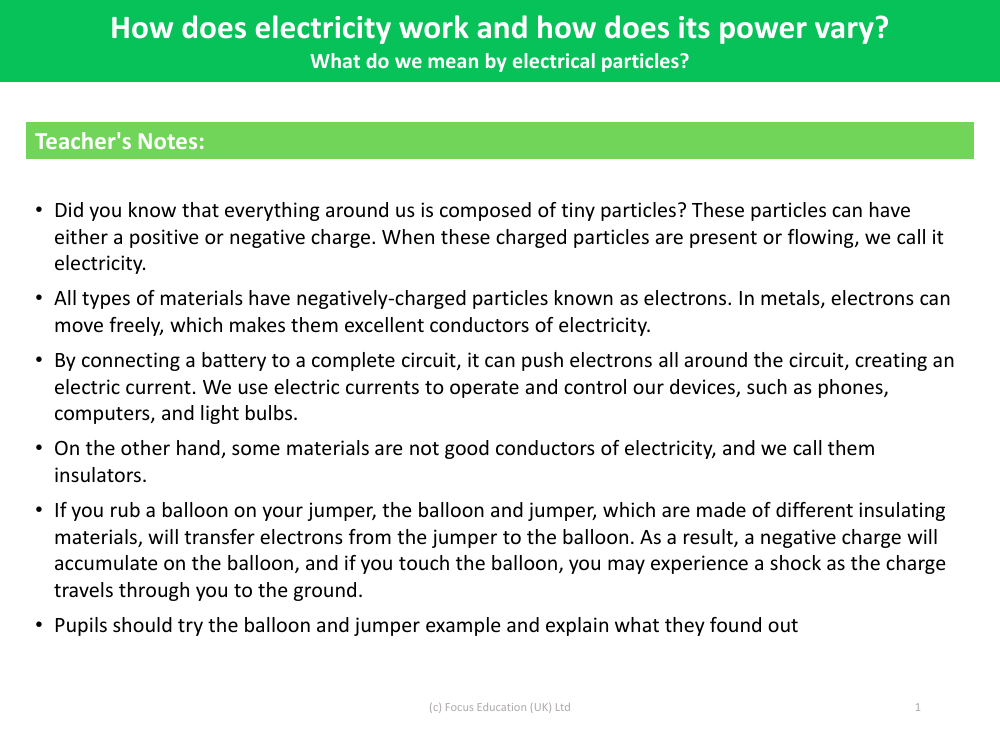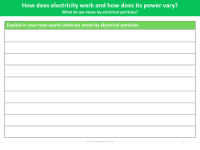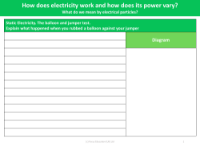What do we mean by electrical particles? - Teacher's Notes

Science Resource Description
When we talk about electrical particles, we're referring to the minuscule constituents of matter that carry an electric charge. These tiny particles are the building blocks of the world we live in and can possess either a positive or negative charge. The presence and movement of these charged particles is what we commonly know as electricity. It's a fundamental concept that explains how we're able to harness energy to power various devices and systems in our daily lives.
Electrons, which are negatively-charged particles, play a crucial role in the realm of electricity. These electrons are found in all materials, but they are particularly free to move in metals, making metals excellent conductors of electricity. When we create a complete circuit, for instance by attaching a battery, we can push electrons through the circuit, thereby generating an electric current. This current is what powers our electronic gadgets, from smartphones to light bulbs. Conversely, materials that do not allow for the easy flow of electrons are known as insulators. A classic example of demonstrating this concept is rubbing a balloon against a jumper, where electrons are transferred, creating a static charge that can lead to a small shock. This simple experiment, which pupils can perform, illustrates the transfer of charge between different materials.



